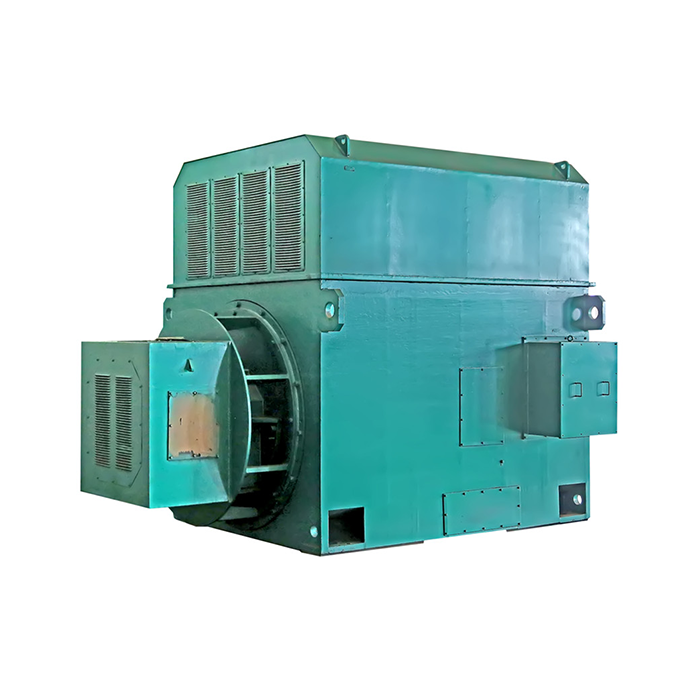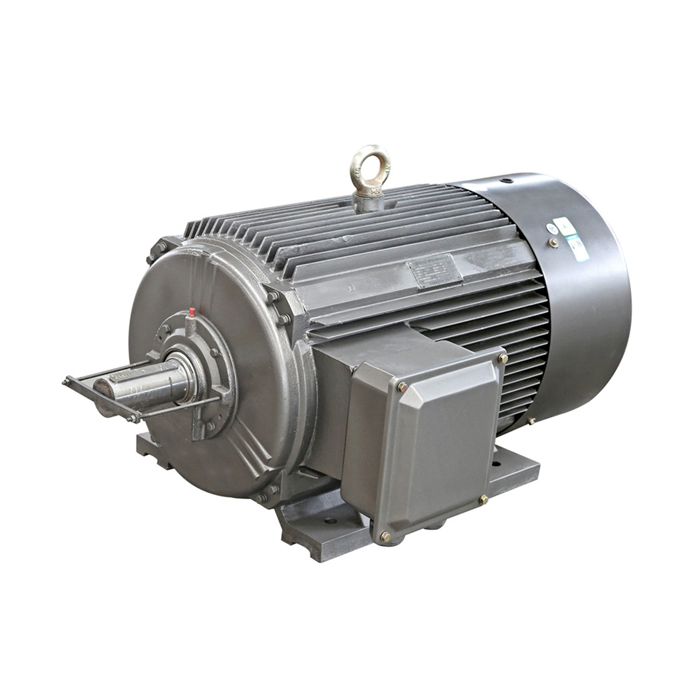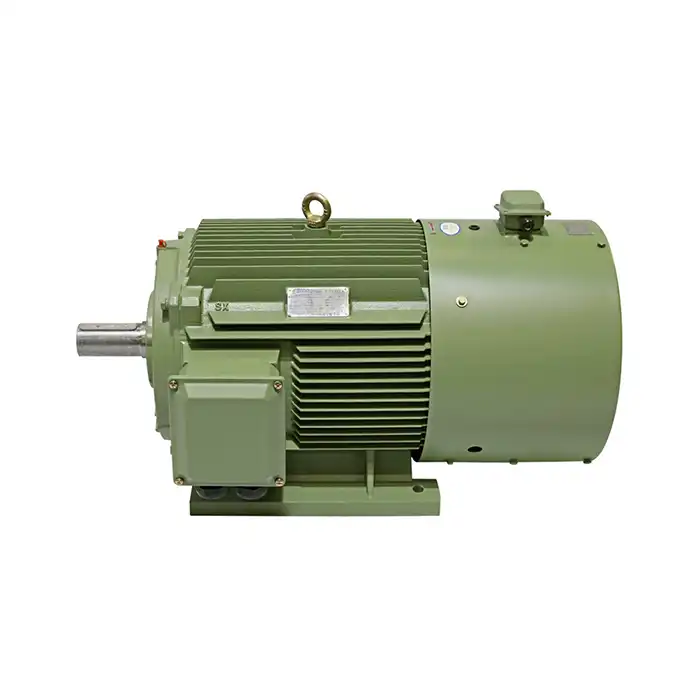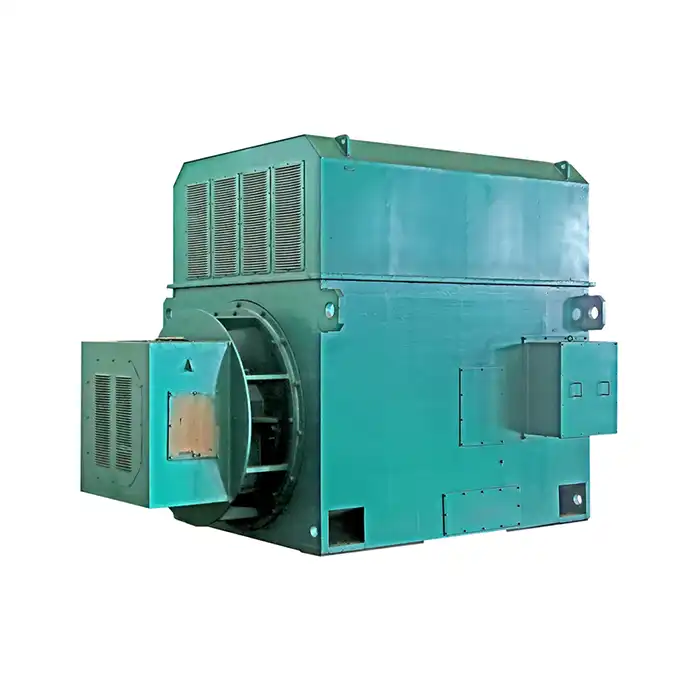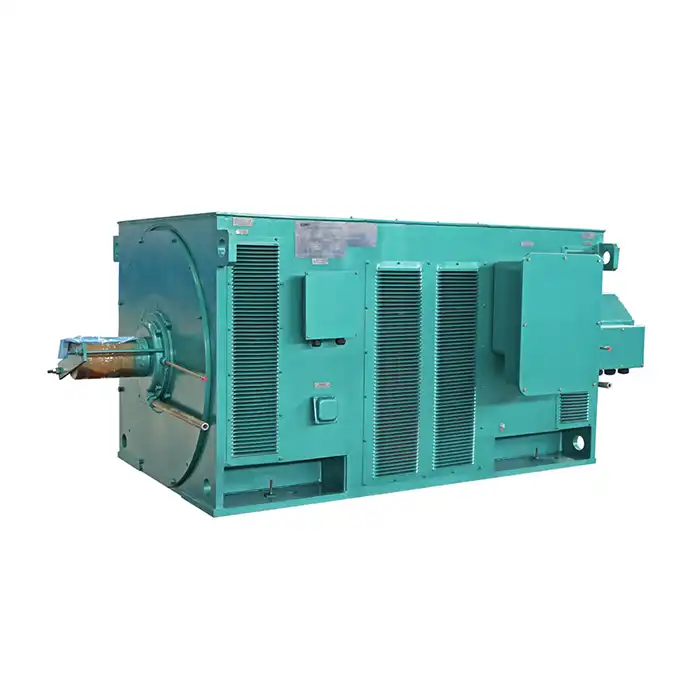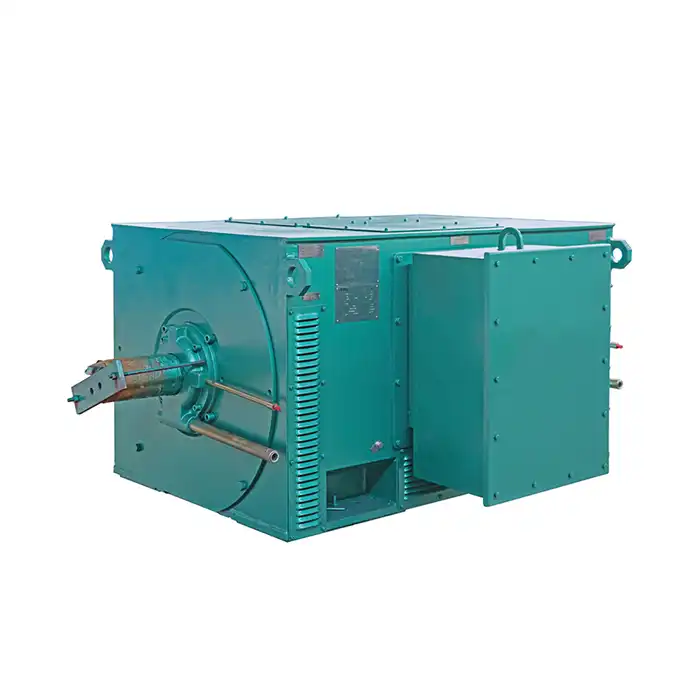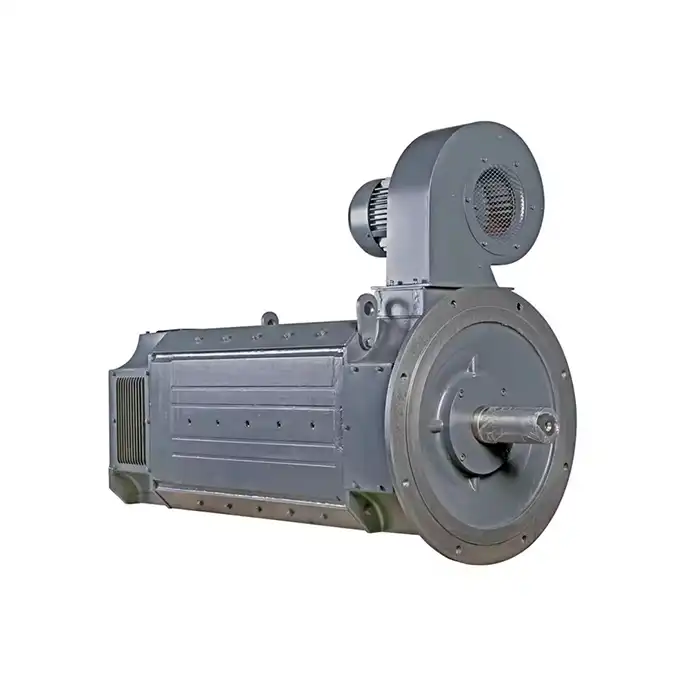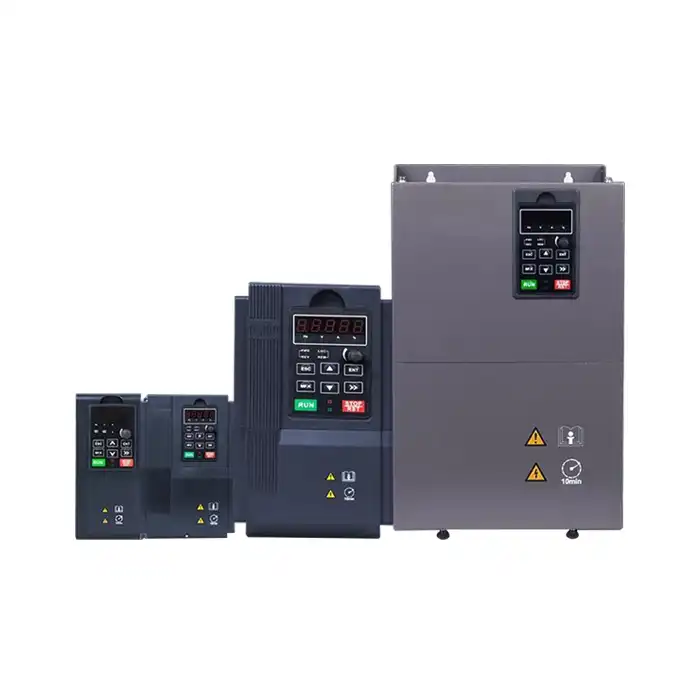Lubrication Best Practices for LV Induction Motors
Proper lubrication is crucial for the optimal performance and longevity of LV induction motors. These motors, widely used in various industrial applications, require careful attention to their lubrication needs to ensure smooth operation and prevent premature wear. In this comprehensive guide, we'll explore the best practices for lubricating LV induction motors, helping you maintain your equipment effectively and extend its service life.
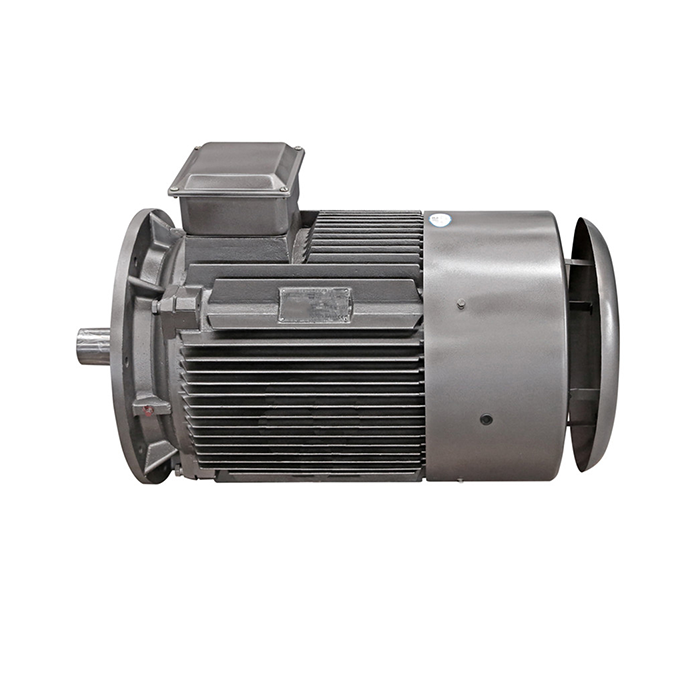
Series:YE3
Frame number: 80-450
Power range:0.75-1000kW
Protection level:IP55
Energy efficiency class: IE3
Voltage range: 380V,400V,415V,660V, etc.
Application:can be used in various fields of the national economy, such as machine tools,water pumps,fans,compressors,and can also be used in transportation, mixing, printing, agricultural machinery, food and other occasions that do not contain flammable, explosive or corrosive gases.
Certificate: international standard IEC60034-30 "Efficiency Classification of Single-speed Three-Phase Squirrel Cage Induction Motors".
Advantage:The high quality of the electric motor guarantees high operational reliability.
Others: SKF, NSK, FAG bearings can be replaced according to customer requirements.
Selecting the right lubricant type
Choosing the appropriate lubricant for your LV induction motor is fundamental to its performance and durability. The right lubricant helps reduce friction, dissipate heat, and protect against wear and corrosion. Here are some key factors to consider when selecting a lubricant:
Understanding lubricant properties
Different lubricants have varying properties that affect their performance in specific applications. Some essential properties to consider include:
- Viscosity: The lubricant's resistance to flow at different temperatures
- Temperature range: The range of temperatures at which the lubricant remains effective
- Oxidation resistance: The ability to resist breakdown due to exposure to oxygen
- Water resistance: The capacity to maintain effectiveness in the presence of moisture
Compatibility with motor components
Ensure that the chosen lubricant is compatible with the materials used in your LV induction motor. Some lubricants may react with certain plastics or rubber seals, causing degradation or failure. Always consult the motor manufacturer's recommendations and the lubricant specifications to avoid compatibility issues.
Environmental considerations
Take into account the operating environment of your motor when selecting a lubricant. Factors such as temperature extremes, humidity, dust, and chemical exposure can impact lubricant performance. Choose a lubricant that can withstand the specific environmental challenges your motor faces.
Grease vs. oil lubrication
LV induction motors typically use either grease or oil for lubrication. Each has its advantages:
- Grease: Ideal for bearings, easier to contain, and requires less frequent reapplication
- Oil: Provides better heat dissipation and is suitable for high-speed applications
Consider your motor's specific requirements and operating conditions when choosing between grease and oil lubrication.
Optimal lubrication intervals and methods
Establishing the right lubrication schedule and using proper techniques are essential for maintaining your LV induction motor. Here's what you need to know:
Determining lubrication frequency
The optimal lubrication interval depends on several factors, including:
- Motor size and speed
- Operating conditions (temperature, load, environment)
- Lubricant type and quality
- Bearing design and condition
Consult your motor's manual or the manufacturer's recommendations for specific guidance on lubrication intervals. In general, larger motors and those operating under harsh conditions may require more frequent lubrication.
Proper lubrication techniques
Follow these steps to ensure proper lubrication of your LV induction motor:
- Clean the grease fittings and surrounding area to prevent contamination
- Use the correct grease gun and nozzle for your motor's fittings
- Apply the lubricant slowly and steadily to allow even distribution
- Stop when you feel resistance or see fresh grease emerging from the seals
- Run the motor for a few minutes to distribute the lubricant evenly
Monitoring and adjusting lubrication practices
Regularly monitor your motor's performance and adjust your lubrication practices as needed. Signs that may indicate the need for changes in your lubrication routine include:
- Unusual noise or vibration
- Increased operating temperature
- Visible grease leakage or contamination
- Changes in motor efficiency or power consumption
Lubrication documentation and tracking
Maintain detailed records of your lubrication activities, including:
- Dates of lubrication
- Type and amount of lubricant used
- Observations or issues noted during lubrication
- Any changes in lubrication practices or schedules
This documentation helps you track trends, identify potential issues, and optimize your lubrication practices over time.
Common lubrication mistakes to avoid
Even with the best intentions, it's easy to make mistakes when lubricating LV induction motors. Avoiding these common pitfalls can help ensure the longevity and reliability of your equipment:
Over-lubrication
Applying too much lubricant can be just as harmful as under-lubrication. Excess grease can lead to:
- Increased friction and heat generation
- Seal damage and lubricant leakage
- Contamination of the motor's internals
- Reduced motor efficiency
Always follow the manufacturer's recommendations for lubricant quantity and avoid the temptation to add "just a little more."
Using incompatible or low-quality lubricants
Using the wrong type of lubricant or opting for low-quality products can lead to premature wear, increased friction, and potential motor failure. Always use lubricants that meet the specifications recommended by the motor manufacturer and choose reputable brands known for their quality.
Neglecting cleanliness
Contamination is a major enemy of proper lubrication. Failing to maintain a clean environment during the lubrication process can introduce dirt, dust, and other particles that can accelerate wear and cause damage. Always clean fittings and surrounding areas before applying lubricant, and store lubricants in a clean, sealed container.
Ignoring signs of lubrication problems
Be attentive to signs that may indicate lubrication issues, such as:
- Unusual noises or vibrations
- Increased motor temperature
- Visible grease leakage or discoloration
- Changes in motor performance or efficiency
Addressing these signs promptly can prevent more severe damage and extend the life of your LV induction motor.
Failing to adapt to changing conditions
Motor lubrication needs may change over time due to factors such as:
- Changes in operating conditions or environment
- Aging of the motor and its components
- Modifications to the motor or surrounding equipment
Regularly review and adjust your lubrication practices to ensure they remain optimal for your motor's current needs.
Conclusion
Proper lubrication is a critical aspect of maintaining LV induction motors for optimal performance and longevity. By selecting the right lubricant, following appropriate lubrication intervals and methods, and avoiding common mistakes, you can significantly extend the life of your motors and reduce the risk of unexpected downtime.
Remember that lubrication is an ongoing process that requires attention to detail and a commitment to best practices. Regular monitoring, documentation, and adjustment of your lubrication routines will help ensure that your LV induction motors continue to operate reliably and efficiently for years to come.
Enhance Your LV Induction Motor Performance with XCMOTOR
When it comes to maintaining and optimizing your LV induction motors, XCMOTOR is your trusted partner. Our expertise in motor manufacturing and maintenance ensures that you receive top-quality products and guidance for all your lubrication needs. With our comprehensive range of motors and industry-leading support, we help you maximize the performance and lifespan of your equipment. Don't let improper lubrication hold back your operations – reach out to XCMOTOR today and experience the difference that proper motor care can make. Contact us at xcmotors@163.com to learn more about our products and services as a leading LV induction motor manufacturer.
References
- Johnson, R. T. (2019). "Advanced Lubrication Techniques for LV Induction Motors." Journal of Industrial Machinery, 45(3), 278-295.
- Smith, A. L., & Brown, K. M. (2020). "Optimizing Lubricant Selection for Low Voltage Motors." Industrial Lubrication and Tribology, 72(4), 512-528.
- Wilson, E. J. (2018). "Best Practices in Motor Lubrication: A Comprehensive Guide." Machinery Lubrication Magazine, 16(2), 42-58.
- Chen, Y., & Zhang, L. (2021). "Environmental Factors Affecting Lubrication in LV Induction Motors." IEEE Transactions on Industry Applications, 57(6), 3215-3226.
- Taylor, M. R. (2017). "Common Pitfalls in Industrial Motor Lubrication and How to Avoid Them." Tribology International, 112, 163-175.
- Anderson, P. K., & Lee, S. H. (2022). "Long-term Effects of Proper Lubrication on LV Induction Motor Lifespan." Energy Conversion and Management, 253, 115091.



